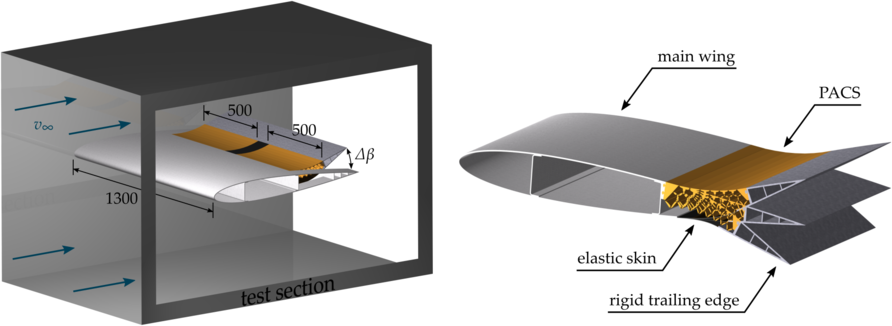High aspect ratio aircraft have a significantly reduced induced drag, but have only limited installation space for control surfaces near the wingtip. This paper describes a multidisciplinary design methodology for a morphing aileron that is based on pressure-actuated cellular structures (PACS). The focus of this work is on the transient dynamic system behavior of the multi-functional aileron. Decisive design aspects are the actuation speed, the resistance against external loads, and constraints preparing for a future wind tunnel test. The structural stiffness under varying aerodynamic loads is examined while using a reduced-order truss model and a high-fidelity finite element analysis. The simulations of the internal flow investigate the transient pressurization process that limits the dynamic actuator response. The authors present a reduced-order model based on the Pseudo Bond Graph methodology enabling time-efficient flow simulation and compare the results to computational fluid dynamic simulations. The findings of this work demonstrate high structural resistance against external forces and the feasibility of high actuation speeds over the entire operating envelope. Future research will incorporate the fluid–structure interaction and the assessment of load alleviation capability.
P. Meyer, S. Lück, T. Spuhler, C. Bode, C. Hühne, J. Friedrichs, M. Sinapius
Transient Dynamic System Behavior of Pressure Actuated Cellular Structures in a Morphing Wing
Aerospace, 8(3), 89, (2021) [Link]

